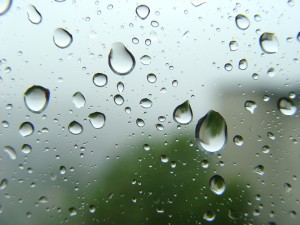 When you’re playing in a soccer game, the weather and the elements can play a strong role.
When you’re playing in a soccer game, the weather and the elements can play a strong role.
You might have grumbled when you had to play in the rain, for example, and bemoaned the negative effect it had on you and your team’s play.
But the elements around you don’t have to be a bad thing. Here are four tips for using them to your advantage.
Tips for Playing Soccer in Rainy Conditions
If the field is wet, you know the ball will skip.
If you make better adjustments than your opponent, you will have a big advantage.
First, when trapping or receiving a ball, you must be sure to get your body behind it.
This is always good advice, but it becomes paramount when the ball is skipping.
If the rain has been heavy, there will likely be some puddles on the field. Depending on your style, you may have to make some big adjustments, because you simply will not be able to dribble through the puddles.
Although this may seem like an obvious point, I’ve seen a lot of players throw caution to the wind and attempt to dribble all around the field just as they normally do.
Don’t try to do too much and play smart. If you do get the ball stuck, however, the most effective way to get it out of a puddle is to scoop it out.
Finally, for shooting, you want your shot to hit the ground before it gets to the goalie because it will pick up momentum as is skips off the wet surface.
Just about all of your shots should be on the ground because it it much more difficult for a keeper to judge the skip and make a save.
Crashing the box becomes extremely important as well, as there will almost always be a rebound opportunity.
Adjusting to Playing in Windy Conditions
When playing with a strong head wind, you will need to play balls on the ground, because the wind will hold it back.
Goalkeepers especially need to avoid punting high in the air. For both field players and goalies, however, there will be times when you need to play the ball in the air.
When this time comes, make sure you drive the ball so it will cut through the wind. There are also a couple special circumstances to be aware of.
For one, you will be able to put in more teasing crosses from the wing because the wind will either hold the ball up or push it a little bit away from the goalie.
When there is a strong wind at your back, you know the ball will carry further. This means you will be able to shoot from further distances, but you will have to take a little off of your long balls.
Finally, with strong side winds it is easier to cross the ball from one side than the other. Be sure to note which side is with the wind and adjust your gameplan accordingly.
Adjustments for Sunny Conditions
When you receive a pass, you should always take a quick peak over your shoulder to assess the situation.
How close is your defender? What side is he or she pressuring? Can you turn?
In sunny conditions, you can do this even more effectively.
By using your opponent’s shadow, you can often answer these questions without having to take a peak over your shoulder.
Naturally, you tend to look down when trapping and receiving the ball, so with the sun on your side, you will be able to see if there are shadows around.
Playing in Extreme Hot and Cold Temperatures
For games with excessive heat, staying hydrated is the most important factor, and it needs to begin long before kickoff.
As far as your gear, some players wear just their jersey, others opt for a t-shirt underneath, and still others cut off Under Armour heat gear.
When you’re facing frigid conditions, some players like to wear a jersey and gloves, while others wear Under Armour cold gear in addition.
Personally, I used to put Vicks VapoRub just below the collar of my jersey so it would be in the center of my chest.
I did this to help with my breathing, and I’ve seen EPL players with something in the same spot during cold games.
Finally, although it’s less obvious in cold temperatures, staying hydrated is just as important as it is during hot games.
Don’t forget the Gatorade or water just because you are shivering.
 It’s pretty obvious that playing more soccer helps develop your skills, but you might not know that watching games on TV can also make you a better player.
It’s pretty obvious that playing more soccer helps develop your skills, but you might not know that watching games on TV can also make you a better player.